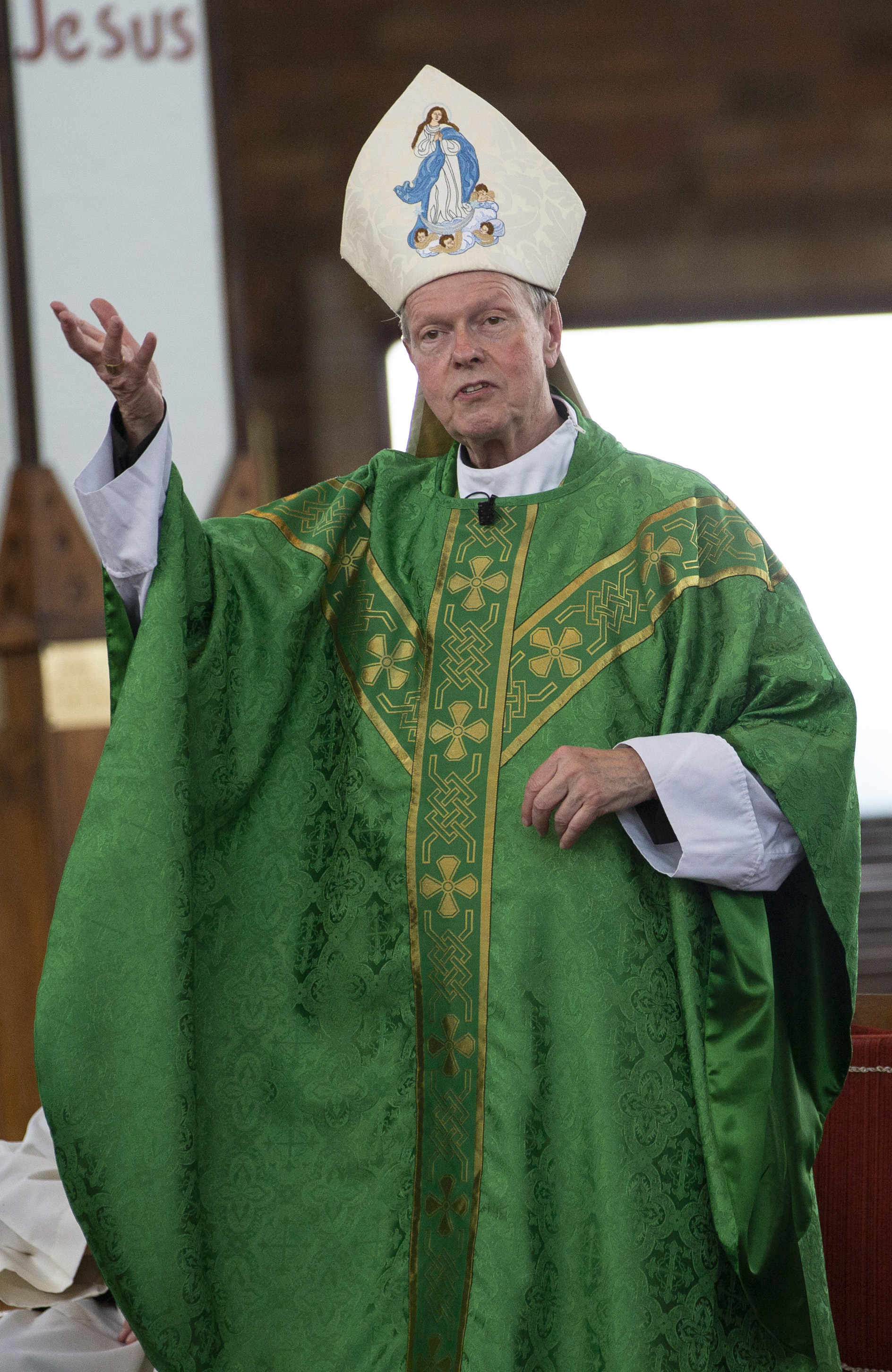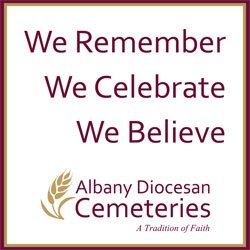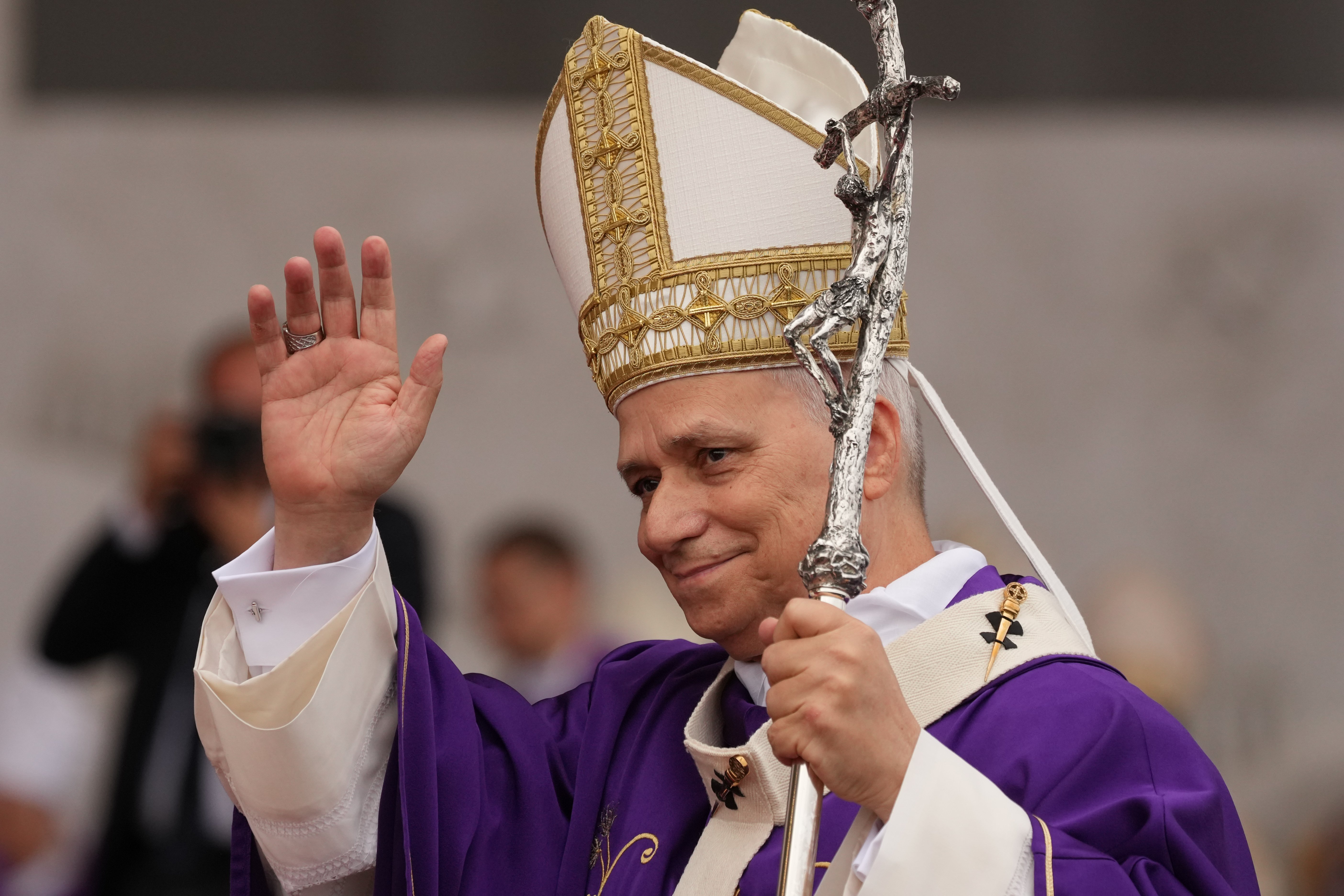April 2, 2025 at 10:15 a.m.
THE CHALLENGE BEFORE US
When writing a story about what the makeup of the Diocese of Albany will look like in the future, you have to start by looking at the numbers.
Our Diocese, spans 14 counties and 10,419 square miles, has seven vicariates (a territorial jurisdiction, often a group of parishes, under the oversight of a vicar), 126 parishes and 33 pastoral networks. These are numbers that most Catholics are aware of and are not surprising. A look at some other statistics may not be as well known and offer a sobering dose of reality.
This year, the Diocese will have 49 active, diocesan priests younger than 70; in the year 2000, that number was 185. We have approximately 69 parishes without a resident priest. Specific to recent financial numbers, 46 of our parishes had a net positive operating budget in 2022, while 67 parishes — mainly due to a more robust stock market — had a net positive operating budget in 2023. Just 22 parishes had a net positive operating budget in both 2022 and 2023.
A total of 53 of our 126 parishes are located in just six regions: Albany (17), Schenectady (14), Troy (9), greater Amsterdam (5), greater Herkimer (4) and greater Glens Falls (4).
What do all these numbers mean collectively? There is probably no one to better answer this question than Thomas Cronin, Director of Evangelization & Strategic Planning. Cronin travels to parishes across the Diocese talking with pastoral councils, finance committees, trustees, parish staff, parish leadership, people that are engaged in leading ministries and his message is clear.
“I meet with at least two parishes a week and the primary mission is information sharing. I don’t want to sugarcoat our situation, the word crisis is appropriate. The word crisis refers to an unstable period of time which requires change. It means opportunity,” Cronin said. “But we are in the perfect storm of aging demographics, decreased population, concerns of clergy wellness, parish financial struggles, and our secular culture. We are truly in a crisis and it is not because of diocesan bankruptcy. We are in a crisis based on decades of decline.”
These are challenging times ahead for the Diocese of Albany, but with these challenges comes opportunity as well. This story is meant to share with the people in the pews … the challenge before us.
* * *
What Cronin talks about with the parish councils is vital information that sometimes doesn’t make its way to the pews. Transparency is his goal and the goal of this story. Cronin said that is essential in his parish visits.
“The information is generally well accepted because we don’t know what we don’t know, so people appreciate honest information sharing,” Cronin said. “The fork in the road is what do we do with that information? Our current operations are unsustainable, and if something is unsustainable, we need to develop a plan that includes change to address the challenges.
“We like comfort, we like convenience, we like the status quo and we embrace that. We all do. But I just shared information with you that affirms we are in a state of crisis, meaning we need to change. This is an opportunity. We need to do things differently, how do we do that? This is where things become challenging because people don’t want change.”
The information that Cronin shares can be broken down in four points: Aging demographics and decreased population; struggling parish finances; clergy wellness/number of active clergy/overabundance of church buildings; and the post-Christian/anti-Christian sentiment/American culture of convenience.
Let’s take a look at each one.
AGING DEMOGRAPHICS/DECREASED POPULATION
If you go to Mass on a Saturday or Sunday, it is hard not to notice the people in the pews.
“Pretty much every parish that I have been to, look around,” Cronin said. “The parishioners, the volunteers, the ministers, everyone is getting older. We are not backfilling with the next generation of young people in our church. We look at decreased populations; more and more people are vacating New York state, they are leaving upstate New York for a number of reasons. The political climate, the economy and the weather. People are looking for better opportunities and they are moving to other states. Not only are parishioners getting older, but we are decreasing in population.”
A recent Pew Research Center Poll found that “nearly six-in-10 Catholic adults (58 percent) are ages 50 and older.” While the populations of Albany, Schenectady and Saratoga counties have been relatively the same since 2020, according to the website world population review.com, the same can’t be said for the surrounding counties. In the most recent numbers from 2025 (compared to 2020), Rensselaer (down 1.12 percent), Herkimer (down 1.25), Columbia (down 3.61), Washington (down 4.21) and Greene counties (down 2.63) have all had major population drops.
STRUGGLING PARISH FINANCIALS
Fewer people in the pews makes it hard for parishes to make ends meet.
“This is not specific to diocesan bankruptcy but specific to the challenge that our income, which is the weekly offertory at our parishes, is not making ends meet at many parishes. Our income is not meeting or exceeding our expenditures,” Cronin said. “A lot of our parishes are dipping into their savings. The conversation at parish meetings is to think of your household budget, or if you are in leadership at a business. Would you continue to operate status quo if you had to continually take money out of savings or investments to meet your operational, financial demands?”
The same Pew report found that “about three-in-ten U.S. Catholics (29 percent) say they attend Mass weekly or more often. Larger shares say they pray on a daily basis (51 percent) and say religion is very important in their lives (44 percent). … Overall, 21 percent of U.S. Catholics say they attend Mass weekly and pray daily and consider religion very important. By contrast, 10 percent say they attend Mass a few times a year or less, pray seldom or never, and consider religion not too or not all important.”
“That is our call to action. When parishioners show up for weekend liturgy and the lights are on, the heat is on, people are volunteering, but they do not realize that many of our parishes are struggling financially,” Cronin said. “They are not financially sustainable any longer. They show up and they see the operations but don’t realize the challenges of funding the operations.”
CLERGY WELLNESS
This is not a problem specific to the Diocese of Albany. In a decision last May, the Diocese of Buffalo unveiled a restructuring plan that would merge 34 percent of its 160 parishes. One of the main reasons: 60 percent of that diocese’s priests will be between 65-70 by 2030.
“Our priests love to serve and they love to be with their people,” said Father Robert Longobucco, Vicar General for the Diocese of Albany. “Many times the greatest threat to their wellness is their determination, even when spread very thin, to give of themselves as they always have. We need to allow our priests to exercise the ministry of the Gospel while maintaining a healthy life.”
It is not uncommon for priests in the Diocese of Albany to be ministering to multiple parishes.
“We are at a point where we are putting such stress on our priests that it’s unsustainable. Many if not all of our priests are serving two, three or even four or more parishes,” Cronin said. “It’s impacting them physically, mentally, emotionally and spiritually. The fact is if we don’t have healthy priests, it’s near impossible to have a healthy parish.”
With just 49 active, diocesan priests under 70, that puts a huge burden on our retired clergy.
“In parish meetings, I explain that these words matter: Active priests, not retired, diocesan priests, not order priests, and under the age of 70. Those three things matter immensely because we are relying on our retired priests so heavily it’s a sad state of affairs,” Cronin said. “Think of you or I, when we get to retirement, I want to be able to actually retire. I want to be able to relax. Sadly our priests are not. Many of our retired priests are busier than ever.
“The counterpoint to this is that we have an overabundance of church buildings. At the risk of being facetious, we may not really have a vocations or number of priests problem, our problem truly may be an overabundance of church buildings that we are struggling to serve.”
It is also nearly impossible to build community if your priest, retired or not, has to immediately run off after Mass to his next parish.
“We are losing the opportunity to build that personal relationship with our priests,” Cronin said. “The beauty of relationship building and fostering a sense of community during post-Mass coffee and donuts, many times the priests can no longer stay for that. And spiritually speaking, if anyone wants the opportunity for the Sacrament of Reconciliation before or after a Sunday Mass, many priests don’t have the time because they need to get on the road and get to the next parish for the next Mass.”
POST-CHRISTIAN SENTIMENT/AMERICAN CULTURE OF CONVENIENCE
Adding to this challenge, is that faith is just not as important to people as it was in previous generations.
“It should be of the utmost importance, sadly in today’s world, it is not,” Cronin said. “So we are truly battling this post-Christian secular sentiment.”
Our culture in this country is one of we want what we want, when we want it.
“We, as Americans, as Catholics, we want church where we want it, when we want it and typically sometimes with the priest that we want,” Cronin said. “If you think of other countries, specifically I speak to my priest who is from Nigeria and he says people spend the entire day on Sunday getting ready to go to church. They may have to walk for miles. Meanwhile, what do we do? We may drive by two or three churches to go to the one we want to.”
CONCLUSION
So what does that all mean? All the above factors lead to or result in the challenge the Diocese of Albany is facing. What steps will be taken in the future remain to be seen but the ultimate goal is to be a stronger church with healthier priests and parishes in the end.
“The maintenance of our facilities continues to cost us more and more and is negatively impacting the opportunity to do a better job in fulfilling our mission and at the end of the day … we are not being good stewards of our limited resources,” Cronin said. “We need to view this as an opportunity. Decisions we make going forward are not going to be easy. We might have a smaller Church, but it will be a stronger, more vibrant and healthier Church.”
“What is the opportunity? To coalesce, to grow in strength, to provide the ministries that allow parishes, priests and people to flourish,” said the Diocese of Albany in a statement. “We can make our mission more than survival. It must be living out the Good News. It must simply be sharing Jesus Christ.”
Note: Information from OSV News was used in this report.
- Religious Liberty Commission examines grooming requirements, availability of chaplains in military
- Catholic leaders analyze the impact of stricter immigration policies on Hispanic communities
- Michael Bublé: Meeting Pope Leo ‘is something I will carry with me forever’
- Diocese of Allentown, Pa., draws on blood bank patron saint for diocesan drive
- New Orleans church holds candlelight prayer vigil for those affected by ICE raids
- Hundreds attend Catholic medical conference exploring human dignity in health care
- Jerusalem patriarch: Holy Land needs world’s prayers, support amid ‘disaster’
- Church leaders call for immediate ceasefire after drone kills over 100 civilians — including 63 children — in Sudan
- Indigenous artifacts from Vatican welcomed home to Canada in Montreal ceremony
- Pope says US-European alliance needs to be strong








Comments:
April 5, 2025 7:42 a.m.
Perhaps if the FSSP or the ICKSP was invited by the Diocese to come, more people would move to the diocese and flourish. My family and I would certainly consider moving back if that were the case. We would not have even left.
April 7, 2025 10:17 a.m.
If the diocese wants more priests, it should promote adoration. If it wants to attract more worshippers, it should promote the Holy Spirit. He's being neglected. The Pentecostals are growing. Why? Because members have an "experience" of God.
April 7, 2025 11:14 a.m.
A lot of questions, and few answers -- but here's one: allow deacons to say mass and give communion.
April 8, 2025 6:20 p.m.
I believe that thriving religious communities are those that are nurtured by study of scriptures and by fervent prayer and that focus their energies on cultivating the faith and character of young people as an antidote to growing secularism. Is that us?
April 8, 2025 6:26 p.m.
Would we have more vocations if priests were allowed to marry? Clergy celibacy was only fully embraced in the 12th century; so it is a matter of history, not doctrine. Is Pope Francis considering priestly families?
You must login to comment.